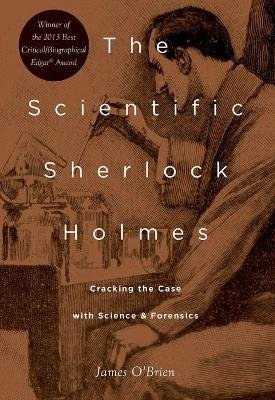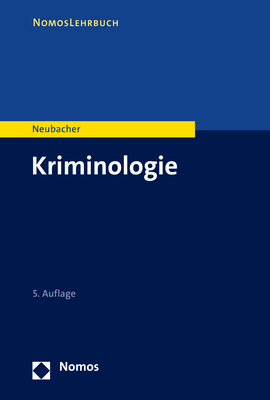
The Scientific Sherlock Holmes
Cracking the Case with Science and Forensics
Seiten
2017
Oxford University Press Inc (Verlag)
978-0-19-067091-7 (ISBN)
Oxford University Press Inc (Verlag)
978-0-19-067091-7 (ISBN)
The Scientific Sherlock Holmes connects Holmes' vegetable poisons with concepts in botany, his use of fingerprinting with forensic science, and carbon monoxide poisoning and hemoglobin tests with concepts in chemistry, thus integrating the Holmes stories with all branches of science.
One of the most popular and widely known characters in all of fiction, Sherlock Holmes has an enduring appeal based largely on his uncanny ability to make the most remarkable deductions from the most mundane facts. The very first words that Sherlock Holmes ever says to Dr. Watson are, "How are you? You have been in Afghanistan, I perceive." Watson responds, "How on earth did you know that?" And so a crime-solving legend is born.
In The Scientific Sherlock Holmes, James O'Brien provides an in-depth look at Holmes's use of science in his investigations. Indeed, one reason for Holmes's appeal is his frequent use of the scientific method and the vast scientific knowledge which he drew upon to solve mysteries. For instance, in heart of the book, the author reveals that Holmes was a pioneer of forensic science, making use of fingerprinting well before Scotland Yard itself had adopted the method. One of the more appealing aspects of the book is how the author includes real-world background on topics such as handwriting analysis, describing how it was used to capture the New York Zodiac killer and to clinch the case against the Lindbergh baby kidnapper.
Sherlock Holmes was knowledgeable about several sciences, most notably chemistry. Therefore the book takes a close look at Holmes the chemist and discusses, for example, chemical poisons such as carbon monoxide, chloroform, and Prussic acid (the historical name for hydrogen cyanide). The author also debunks Isaac Asimov's famous assertion that Holmes was a blundering chemist. In addition, the book discusses mathematics, physics, biology, astronomy, meteorology, and geology, always in the context of Holmes's exploits.
Sherlock Holmes continues to fascinate millions of readers and movie goers alike. The Scientific Sherlock Holmes is a must-read for the legion of fans of this most beloved of all fictional detectives. The paperback version will continue to interest two primary groups: the community of avid Holmes fans who meet regularly to celebrate and discuss the stories, and the scientific community. What scientist would not wish to be "the most perfect reasoning and observing machine that the world has seen"? Sherlock Holmes, Watson assures us, was precisely that. Scientists admire Holmes's devotion to fact, his intellectual brilliance, and the way he separates emotion from his work, and will be especially attracted by a book that explicitly discusses Holmes from a scientific perspective.
One of the most popular and widely known characters in all of fiction, Sherlock Holmes has an enduring appeal based largely on his uncanny ability to make the most remarkable deductions from the most mundane facts. The very first words that Sherlock Holmes ever says to Dr. Watson are, "How are you? You have been in Afghanistan, I perceive." Watson responds, "How on earth did you know that?" And so a crime-solving legend is born.
In The Scientific Sherlock Holmes, James O'Brien provides an in-depth look at Holmes's use of science in his investigations. Indeed, one reason for Holmes's appeal is his frequent use of the scientific method and the vast scientific knowledge which he drew upon to solve mysteries. For instance, in heart of the book, the author reveals that Holmes was a pioneer of forensic science, making use of fingerprinting well before Scotland Yard itself had adopted the method. One of the more appealing aspects of the book is how the author includes real-world background on topics such as handwriting analysis, describing how it was used to capture the New York Zodiac killer and to clinch the case against the Lindbergh baby kidnapper.
Sherlock Holmes was knowledgeable about several sciences, most notably chemistry. Therefore the book takes a close look at Holmes the chemist and discusses, for example, chemical poisons such as carbon monoxide, chloroform, and Prussic acid (the historical name for hydrogen cyanide). The author also debunks Isaac Asimov's famous assertion that Holmes was a blundering chemist. In addition, the book discusses mathematics, physics, biology, astronomy, meteorology, and geology, always in the context of Holmes's exploits.
Sherlock Holmes continues to fascinate millions of readers and movie goers alike. The Scientific Sherlock Holmes is a must-read for the legion of fans of this most beloved of all fictional detectives. The paperback version will continue to interest two primary groups: the community of avid Holmes fans who meet regularly to celebrate and discuss the stories, and the scientific community. What scientist would not wish to be "the most perfect reasoning and observing machine that the world has seen"? Sherlock Holmes, Watson assures us, was precisely that. Scientists admire Holmes's devotion to fact, his intellectual brilliance, and the way he separates emotion from his work, and will be especially attracted by a book that explicitly discusses Holmes from a scientific perspective.
Jim O'Brien is Distinguished Professor Emeritus at Missouri State University. A lifelong fan of Holmes, O'Brien presented his paper "What Kind of Chemist Was Sherlock Holmes" at the 1992 national American Chemical Society meeting, which resulted in an invitation to write a chapter on Holmes the chemist in the book Chemistry and Science Fiction. O'Brien has since given over 120 lectures on Holmes and science.
Introduction
Chapter 1. How Sherlock Holmes Got His Start
Chapter 2. Meet the Main Characters
Chapter 3. Sherlock Holmes: Pioneer in Forensic Science
Chapter 4. Sherlock Holmes: Chemist
Chapter 5. Sherlock Holmes: Other Sciences
Conclusion
Appendix
| Erscheinungsdatum | 22.06.2017 |
|---|---|
| Zusatzinfo | 40 |
| Verlagsort | New York |
| Sprache | englisch |
| Maße | 155 x 231 mm |
| Gewicht | 295 g |
| Themenwelt | Literatur |
| Sachbuch/Ratgeber ► Natur / Technik | |
| Naturwissenschaften ► Chemie | |
| Recht / Steuern ► Strafrecht ► Kriminologie | |
| ISBN-10 | 0-19-067091-6 / 0190670916 |
| ISBN-13 | 978-0-19-067091-7 / 9780190670917 |
| Zustand | Neuware |
| Informationen gemäß Produktsicherheitsverordnung (GPSR) | |
| Haben Sie eine Frage zum Produkt? |
Mehr entdecken
aus dem Bereich
aus dem Bereich
klare Antworten aus erster Hand
Buch | Softcover (2023)
UTB (Verlag)
19,90 €


